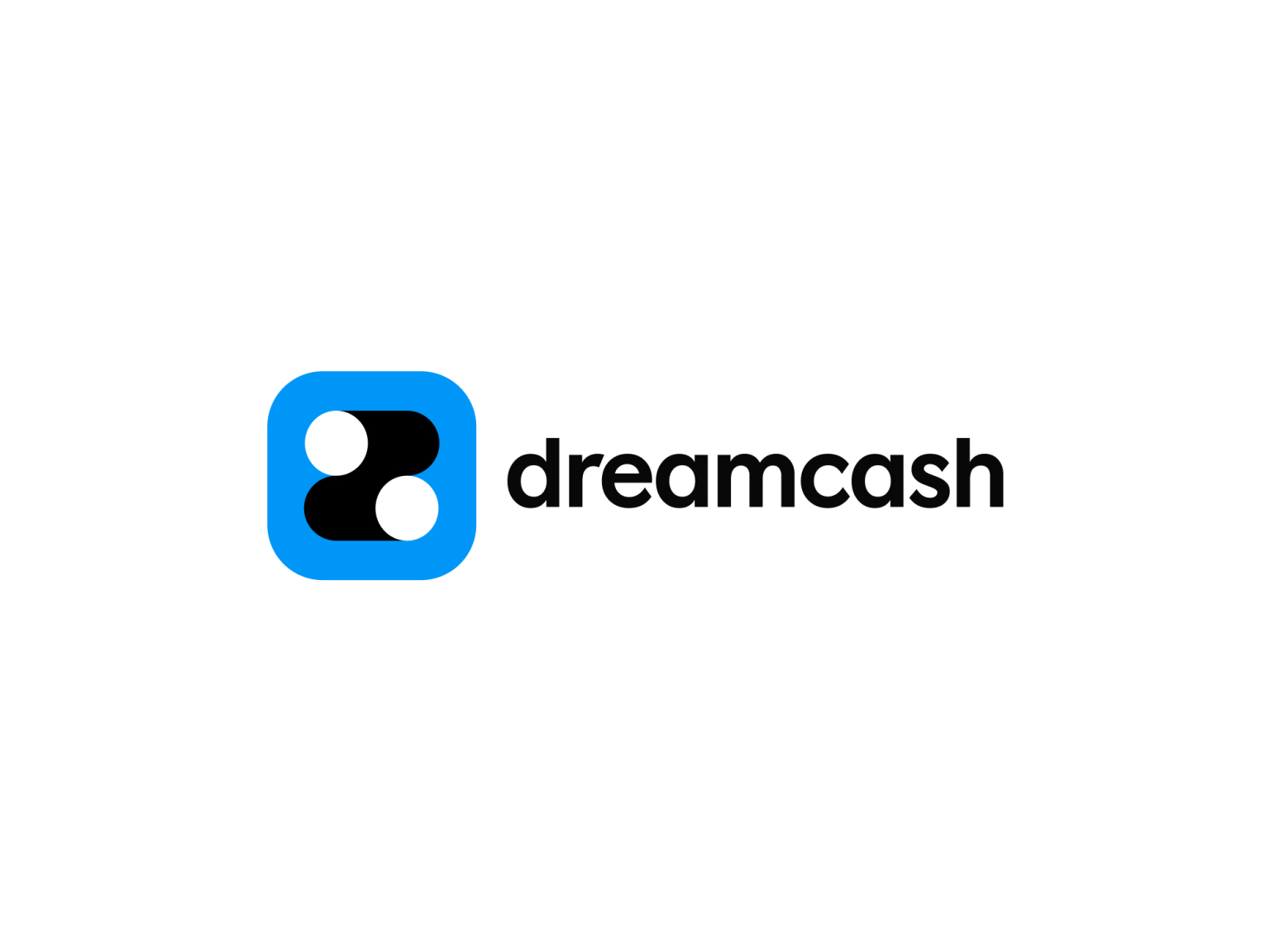In this post, I want to cover the topic Best Software for Building Business Apps Without Developers—the kind of applications that can be made using best no code tools. They enable the creation of sophisticated applications effortlessly.
These applications can be made using no code and low code tools. These tools provide a tremendous value to a small company owner ots a an office. Construct a business app can be performed with minimal expense and time.
Key Points & Best Software For Building Business Apps Without Developers List
| Software | Key Points |
|---|---|
| Microsoft Power Apps | Integrates with Microsoft ecosystem, ideal for enterprises; low-code interface. |
| OutSystems | High-performance low-code platform with full-stack app development. |
| Appgyver (by SAP) | No-code platform suitable for complex logic and enterprise-grade apps. |
| Glide | Builds mobile apps from Google Sheets; fast and user-friendly. |
| Adalo | Drag-and-drop builder for mobile apps with built-in database support. |
| Bubble | No-code web app builder with powerful backend workflows and database. |
| Zoho Creator | Good for internal business apps; connects with Zoho and external APIs. |
| Airtable | Database-first no-code tool; ideal for workflow and internal tools. |
| Quick Base | Strong for workflow automation and real-time collaboration in businesses. |
| Thunkable | No-code mobile app builder with native features and cross-platform output. |
10 Best Software For Building Business Apps Without Developers
1.Microsoft Power Apps
Microsoft Power Apps is a leading low-code solution that enables users to create custom business applications relatively fast.
Organizations that have invested in Microsoft services such as Microsoft 365, Azure, or Dynamics 365 will find it convenient since Power Apps integrates with these services.
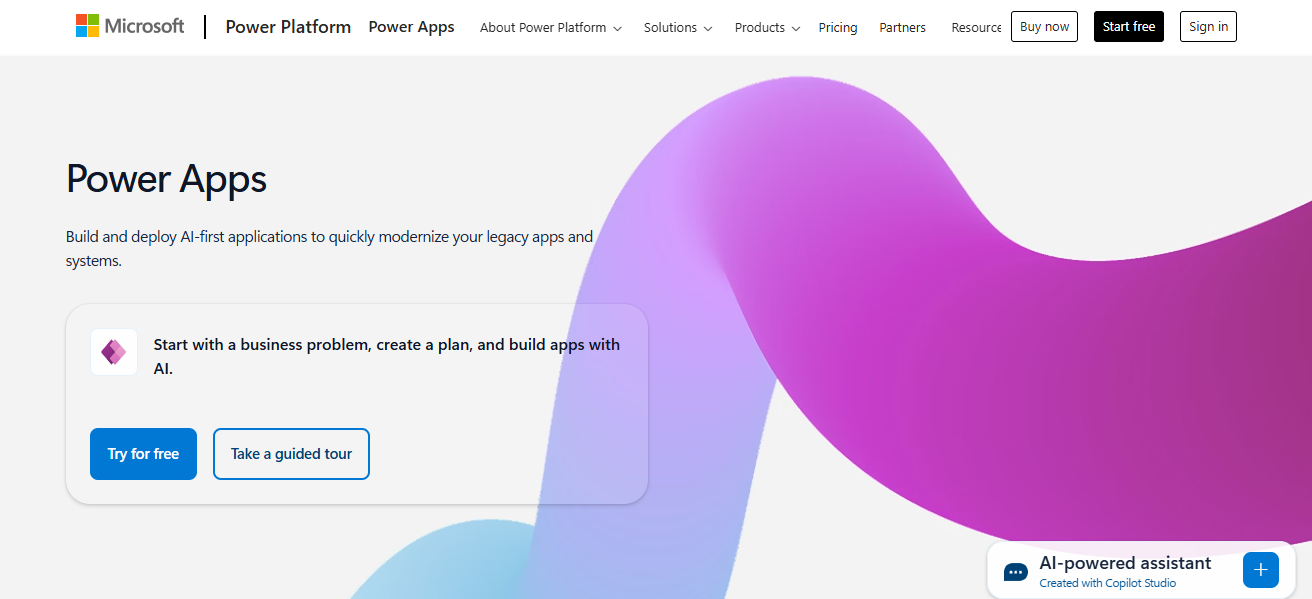
Components are fetched from a library, and users can simply drag and drop them. Workflows can be automated via Power Automate, and hundreds of connectors are available.
Prebuilt connectors and Power Automate workflows can be used for automation. It also includes mobile and desktop responsive design. Advanced security and compliance are offered.
| Feature | Details |
|---|---|
| Integration | Seamless with Microsoft 365, Dynamics 365, and Azure |
| App Types | Web, mobile, and tablet apps |
| User Interface | Drag-and-drop designer |
| Automation | Power Automate integration for workflows |
| Security | Enterprise-grade (Azure AD, DLP policies) |
| AI Integration | AI Builder for adding intelligence to apps |
| Connectors | 700+ prebuilt connectors (SharePoint, Salesforce, etc.) |
| Customization | Supports advanced scripting with Power Fx |
2.OutSystems
OutSystems is one of the first low-code development platforms tailored for enterprise applications. It Provides full-stack, scalable, and secure apps development at a significantly lower effort than traditional coding.
OutSystems development environment offers reusable components and integrates internal and external systems, which streamlines the creation of both simple tools and intricate applications.
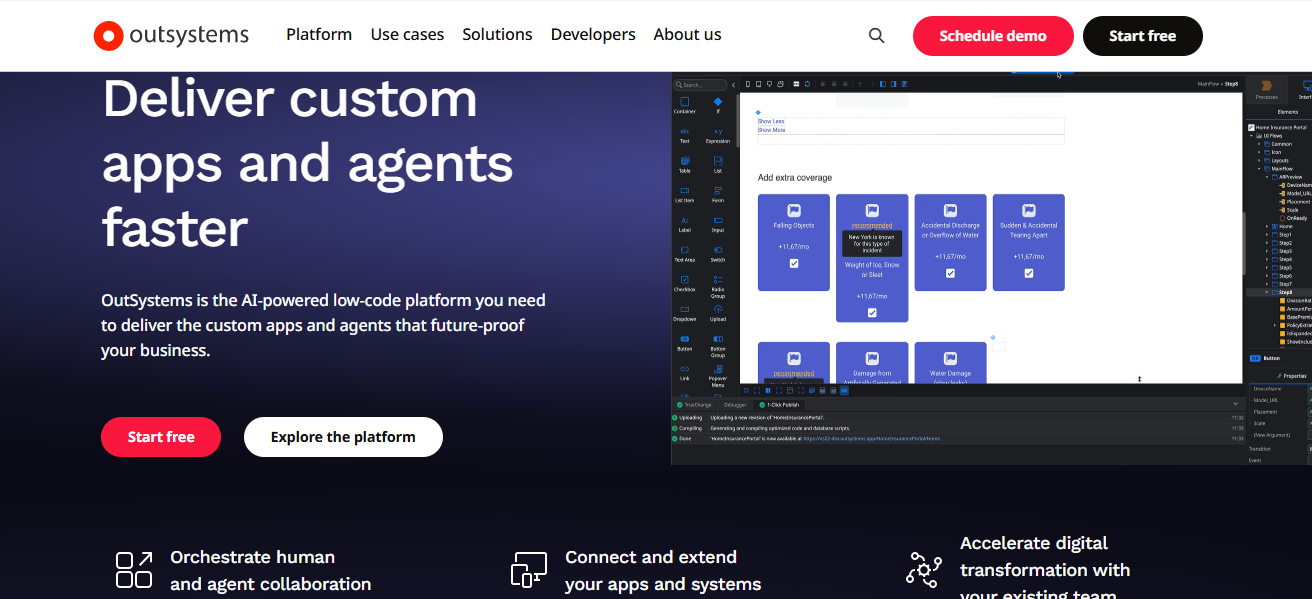
Moreover, OutSystems streamlines development and monitoring with AI-driven suggestions, real-time performance dashboards, and advanced DevOps tools.
OutSystems supports mobile, web, and PWAs. OutSystems is ideal for businesses seeking to modernize legacy systems, rapidly transform operations, and digitize processes without extensive development teams.
| Feature | Details |
|---|---|
| App Types | Web, mobile, and progressive web apps |
| Scalability | Enterprise-grade, supports large-scale applications |
| Workflow Automation | Built-in BPM tools |
| Full-stack Support | Frontend, backend, and database |
| DevOps | Built-in CI/CD, performance monitoring |
| AI Assistance | AI-assisted development and error detection |
| Integration | Easily integrates with external systems via REST/SOAP APIs |
| Offline Access | Supported in mobile apps |
3.Appgyver (by SAP)
Appgyver, now SAP Build Apps, is a business application focused no-code platform. Business users can build complex applications using no-code tools as Appgyver offers Composer Pro for mobile and web apps development with drag-and-drop components and logic flows.
Appgyver offers external data source integration, customizable backends, and a library with hundreds of functions and templates. It facilitates pixel-perfect UI design and responsive layout and provides native mobile application performance.
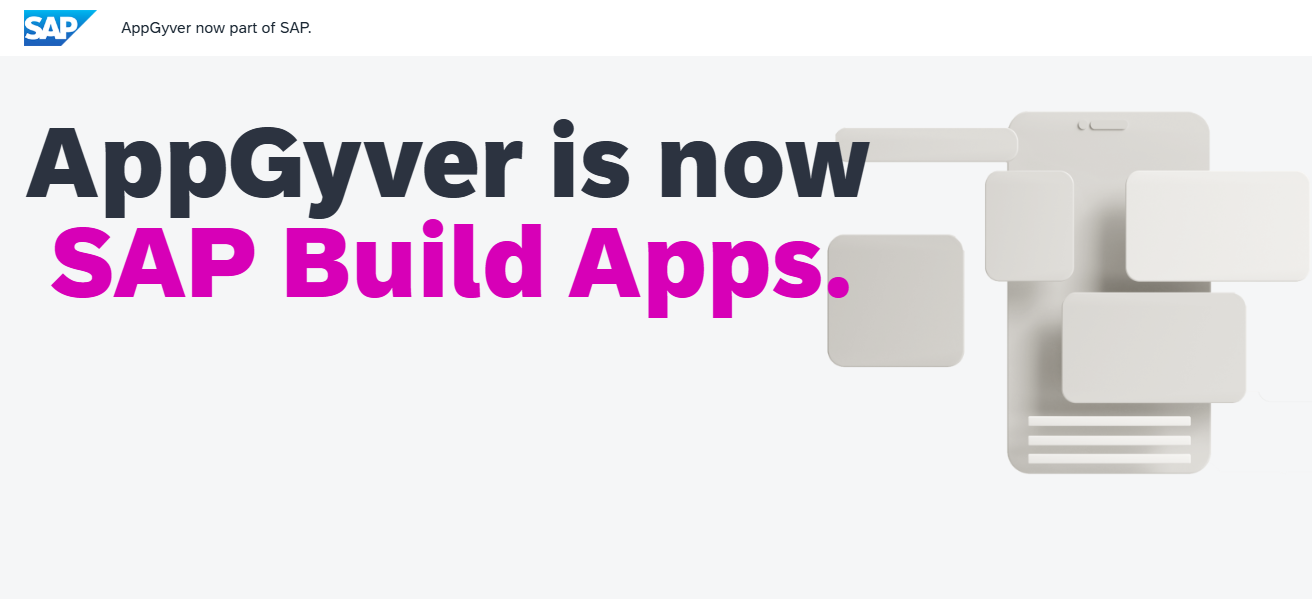
Appgyver is a go-to solution for both enterprise and startup. It stands out with SAP users, but can also work independently.
| Feature | Details |
|---|---|
| Development Type | True no-code (not low-code) |
| App Output | Native mobile, web, and desktop apps |
| Logic Builder | Visual flowchart-style logic design |
| Data Integration | REST APIs, direct integrations |
| UI/UX Design | Pixel-perfect responsive layout |
| Backend Support | Create custom backend logic |
| Offline Capability | Full offline data support |
| SAP Integration | Native SAP ecosystem compatibility |
4.Glide
Glide is an example of an application that has been purpose-built to transform data stored in Google Sheets or Excel into a fully-fledged application. Glide specializes mobile and web application development.
Ease of use is crucial with Glide since the application is directed towards businesses that seek an internal tool. The advancements in technology has enabled Glide to serve as a design srtudio with precision control alongside real-time synchronization with Spreadsheets.
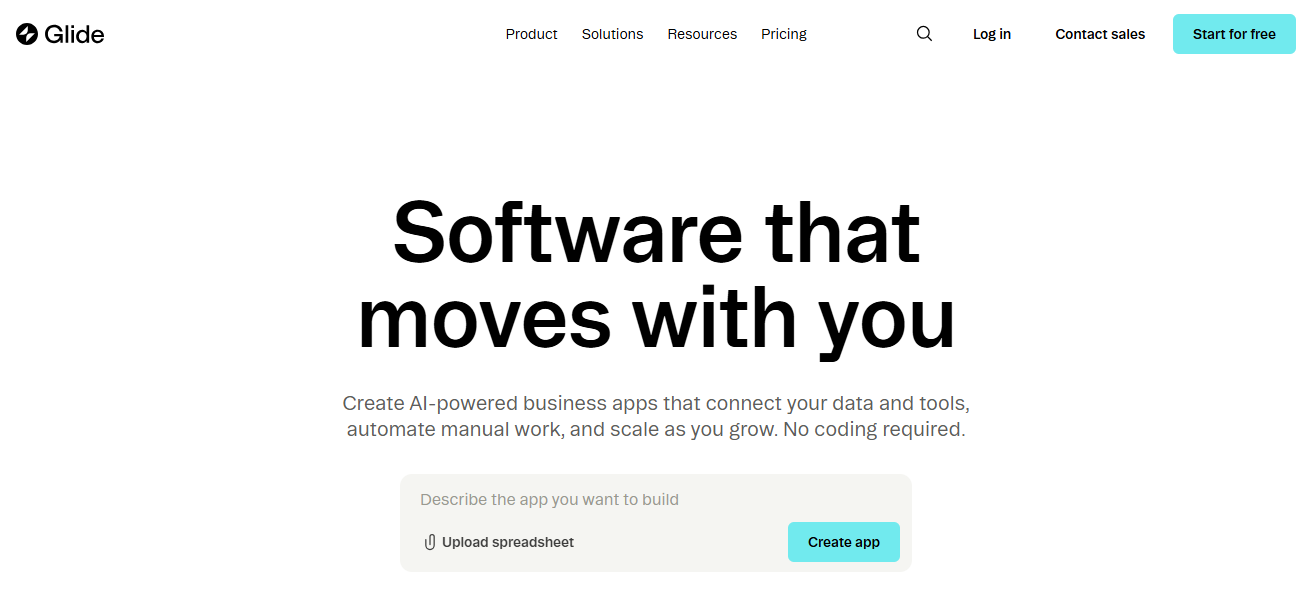
Through Glide, Users can manage screens and enable features that permit user authentication, offline access, and much more. Changing mobile app templates is simple, removing the need to start a project from scratch.
Furthermore, users can create their own logic using spreadsheets or even visual create sequences. Glide also enable users to craft a project without requiring any previous experience in programming.
| Feature | Details |
|---|---|
| Data Source | Google Sheets, Excel, Airtable |
| App Types | Web and mobile responsive apps |
| Interface | Simple drag-and-drop builder |
| Templates | 100+ pre-built app templates |
| Real-time Sync | Updates instantly with spreadsheet data |
| Publishing | Instant publishing via shareable link |
| Authentication | User login and role-based access |
| Automation | Logic and actions via “conditions” and computed values |
5.Adalo
Adalo is a no-code mobile app builder that offers users the capability to design fully functional interactive mobile applications using a drag-and-drop interface. Users can arrange screens, and navigation elements, and even design workflows through the visual interface.
Adalo offers additional features such as a prebuilt database and API support that helps to create dynamic mobile applications that respond to various types of data. Applications built through Adalo can be appraised using the Apple App Store and Google Play.
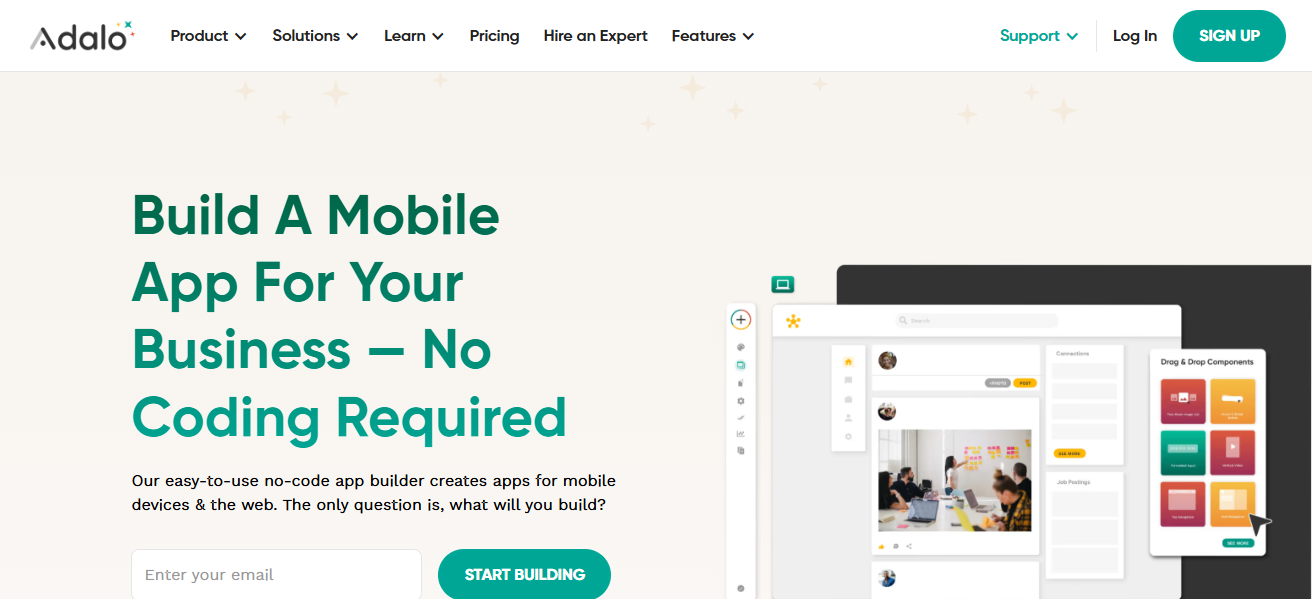
Best for entrepreneurs, freelancers, and small to medium-scale businesses, Adalo enables the building of customer portals, internal company applications, and MVPs without the need for developer support. It is simple to learn; thus, even non-technical users can easily get the hang of using Adalo.
| Feature | Details |
|---|---|
| Platform Support | Native iOS and Android apps |
| Visual Editor | Drag-and-drop UI builder |
| Built-in Database | Includes internal database functionality |
| External Data Integration | APIs and third-party tools |
| Component Library | Pre-built interactive components |
| Publishing | Direct to App Store / Google Play |
| Payments | Stripe integration for payments |
| Logic/Automation | Visual logic with actions and conditions |
6.Bubble
Bubble offers a complete solution for building, deploying, and maintaining complex web applications through its no-code web app interface that is simple yet powerful.
Unlike other tools, it offers deep customization with logic workflows, data structure configuration, and integrations which other tools lack.
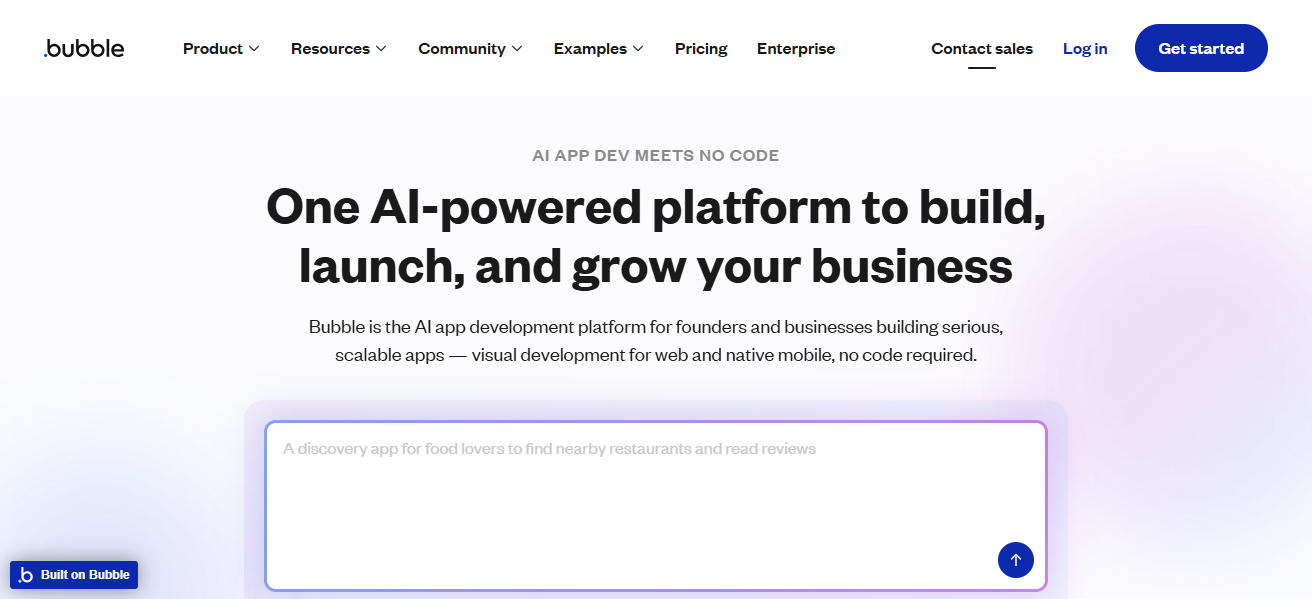
From CRMs and SaaS platforms to even marketplaces, Bubble enables users to create all of them and more. It includes responsive design capabilities, user authentication, and API connectors.
Best for entrepreneurs and startup companies, the no-code web app tool allows complex features to be added through its logic editor without the burden of backend coding. Guaranteeing scalability as the users grow, the platform also accepts custom codes and plugins as per user requirements.
| Feature | Details |
|---|---|
| App Types | Full web apps (marketplaces, CRMs, etc.) |
| Visual Editor | Advanced UI editor with custom logic |
| Database Management | Built-in real-time database |
| Workflows | Backend logic using visual workflows |
| API Integration | REST API support for external services |
| Responsiveness | Mobile-friendly app design |
| Authentication | User management and roles |
| Extensibility | Plugin marketplace and custom code support |
7.Zoho Creator
Focused on enabling businesses to create tailored applications in record time, Zoho Creator is a low-code platform. Its advanced integration features allow users to build forms, create workflows, manage databases, and integrate with Zoho and other third-party services.
Creator supports web and mobile applications and comes with automation tools such as approval flows, alerts, and task assignments. For businesses that use Zoho CRM, Books, or Projects, Creator is extremely helpful. In addition to these, the platform offers analytics, reporting, and role-based access control.
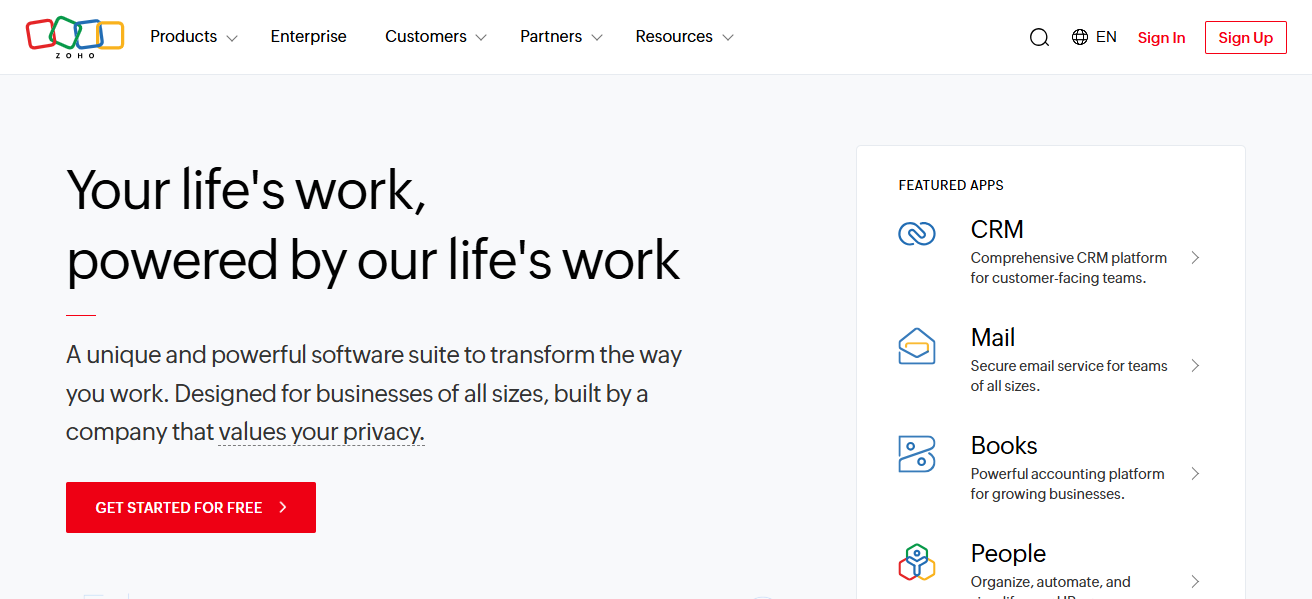
From developing applications for HR digitization and inventory management to customer support, Zoho Creator allows businesses to develop customized solutions without coding through end-to-end development.
| Feature | Details |
|---|---|
| App Types | Web and mobile apps |
| Form Builder | Custom drag-and-drop form creation |
| Workflow Automation | Deluge scripting + visual workflow builder |
| Integrations | Zoho apps, REST APIs, third-party services |
| Reports & Analytics | Built-in dashboards and reporting tools |
| Access Control | Role-based permissions |
| Data Security | ISO, GDPR, HIPAA compliance |
| Offline Access | Supported on mobile |
8.Airtable
Airtable offers a fusion of a simple spreadsheet and a robust relational database for the development of lightweight business applications as well as workflows. While not a traditional app builder, Airtable enables users to create applications by customizing views, adding automation, and linking tables.
Rich media fields, real-time team collaboration, and integration with other software such as Slack, Zapier, and Notion are all supported. Using Airtable Interface Designer, users can deploy dashboards and interfaces.
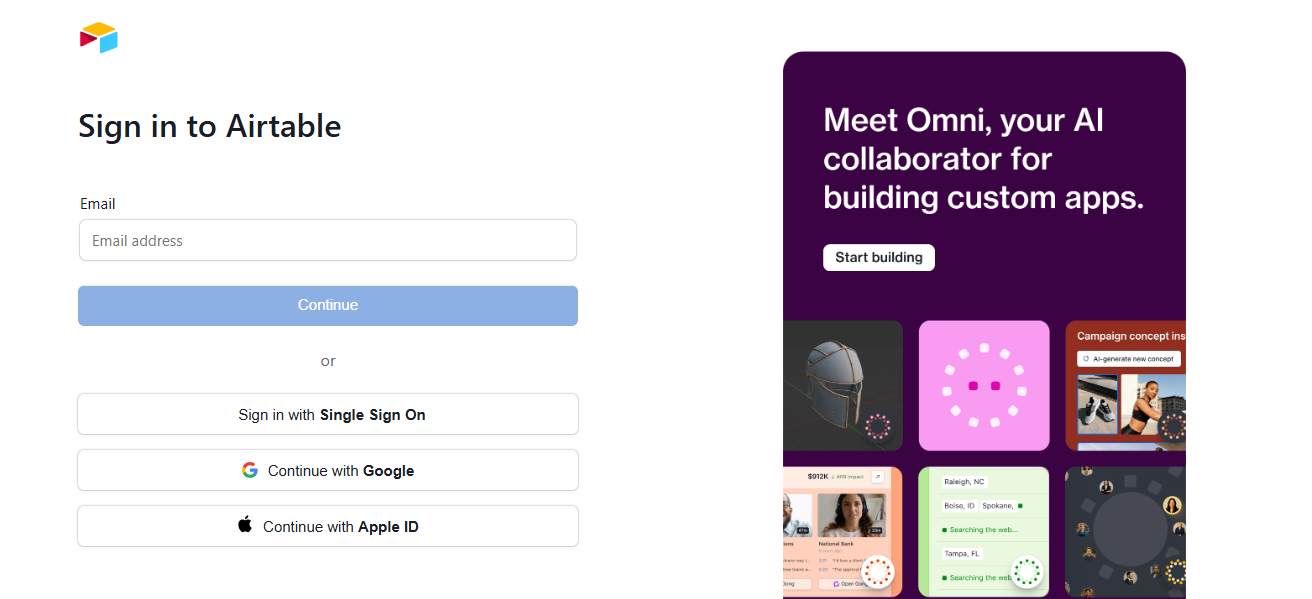
Airtable is excellent for non-developers enabling them to create custom data-driven tools for project tracking, content planning, or CRM systems through visual modification and automation.
| Feature | Details |
|---|---|
| App Types | Web and mobile apps |
| Form Builder | Custom drag-and-drop form creation |
| Workflow Automation | Deluge scripting + visual workflow builder |
| Integrations | Zoho apps, REST APIs, third-party services |
| Reports & Analytics | Built-in dashboards and reporting tools |
| Access Control | Role-based permissions |
| Data Security | ISO, GDPR, HIPAA compliance |
| Offline Access | Supported on mobile |
9.Quick Base
As a sophisticated low-code solution, Quickbase specializes in the development of custom business applications alongside workflow automation. It connects processes, data, and people in real-time which is is a unique advantage.
It is possible for users to build applications through Quickbase’s drag-and-drop features, define user roles and permissions, and generate reports and dashboards. Quickbase has connections to enterprise systems of Salesforce, SAP, and other cloud services.
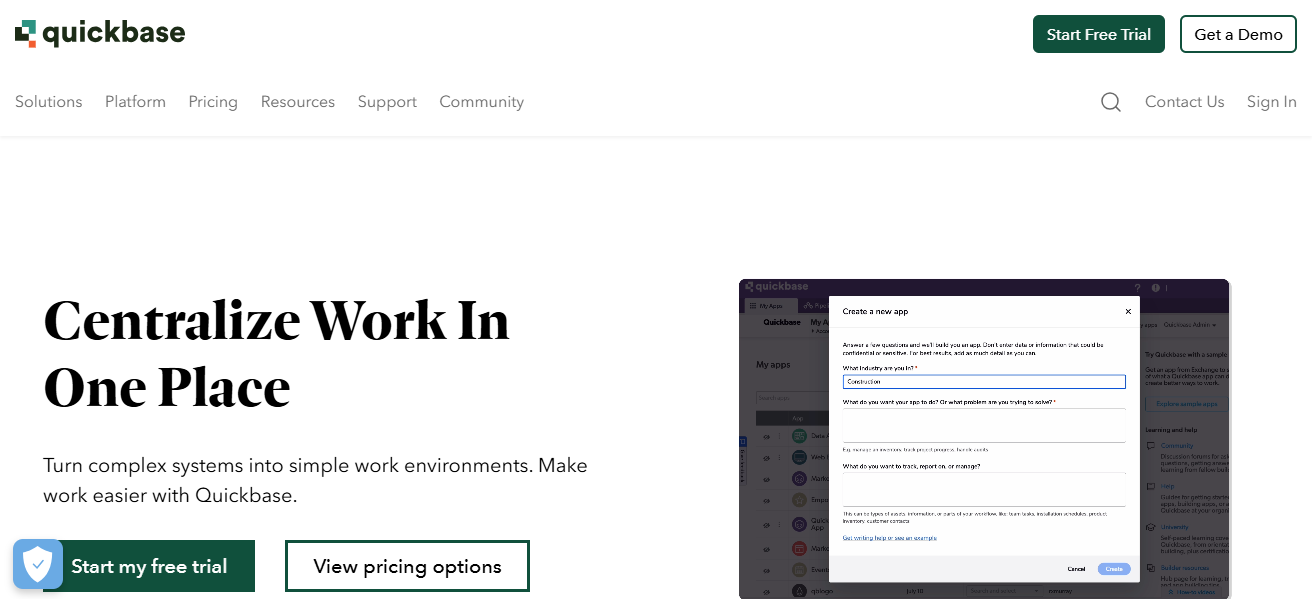
From operational and project management to construction, manufacturing and logistics, business and industry flexibility is provided.
For range, Quickbase is favored for governance, compliance, and regulated scalable deployments. Quickbase is the go to solution for teams who need speed in development and full governance, compliance and reliable control afterwards.
| Feature | Details |
|---|---|
| App Builder | Drag-and-drop low-code editor |
| Automation | Workflow rules and triggers |
| Real-time Data Sync | Across integrated systems |
| User Permissions | Granular access control |
| Reporting | Custom dashboards, charts, and metrics |
| Integration | REST APIs, third-party services (Salesforce, NetSuite) |
| Mobile Support | Mobile-friendly automatically |
| Governance | Enterprise-level compliance and security |
10.Thunkable
A mobile application development platform for both iOS and Android, Thunkable comes equipped with no code features making it easier to build cross platform apps. For screen and logics addition, a visual drag and drop interface is also used which resembles Scratch’s interface.
With thunkable, APIs, GPS, cameras and other device hardware can be used and applications can be deployed in app stores directly.
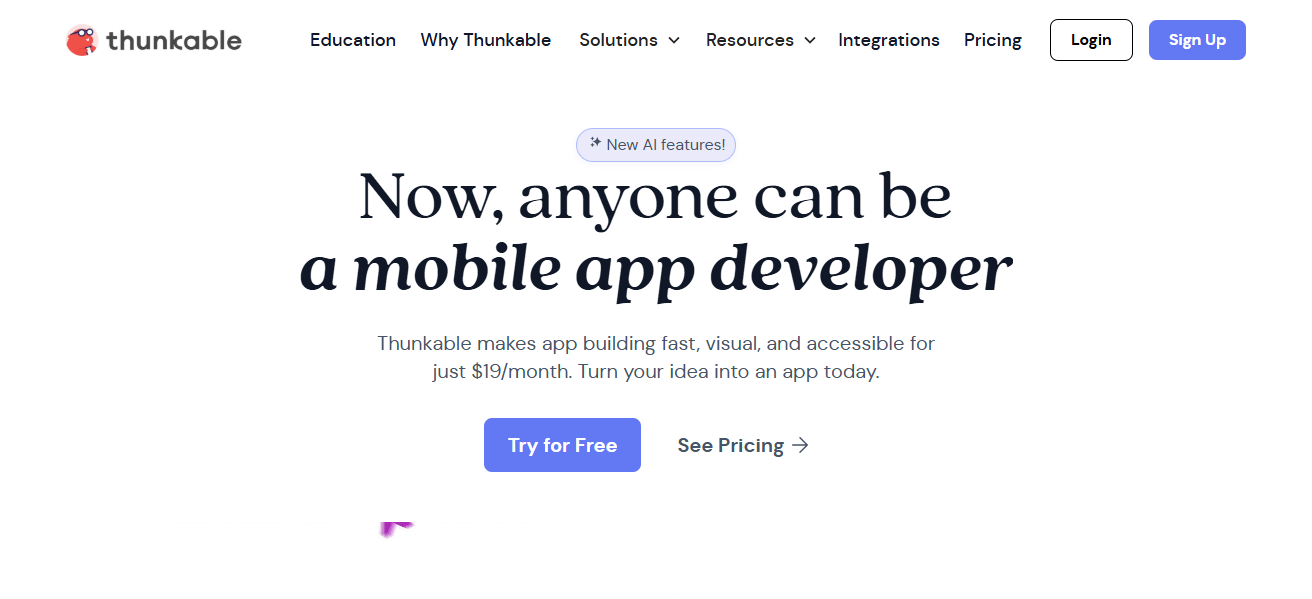
Also, customer facing applications, app prototyping, and internal utilities can all be developed from it. With real-time preview and hosting, cloud based app development is supported.
Although focused on mobile interfaces, Thunkable is also useful for educators and entrepreneurs who need to design interactive applications without the need of code.
| Feature | Details |
|---|---|
| Platform Support | Android, iOS, and Web apps |
| Visual Editor | Drag-and-drop block interface |
| Logic Builder | Code blocks for logic (like Scratch) |
| Component Library | Includes maps, camera, sensors, and media |
| API Integration | Connect to external services easily |
| Real-time Preview | See changes live while building |
| App Publishing | Export or publish to app stores |
| Cross-platform | One app, multiple platforms |
Conclsuion
In conclusion, no-code and low-code development platforms enable organizations to create sophisticated applications without the need to engage professional developers.
These platforms are tailored for mobile application development, automated workflows, and internal processes for a quick, budget-friendly solution.
Additionally, with platforms like Power Apps, Glide, or Bubble, even people with no technical expertise are able to convert concepts into business applications, thus enhancing operational processes.
This accelerated adoption of such tools is transforming business processes and driving industry-wide digital change.
FAQ
What is no-code software?
No-code software lets users build apps without writing any code using visual interfaces.
Who can use these platforms?
Anyone—from small business owners to enterprise teams—can use them, even without technical skills.
Are these apps secure?
Yes, most platforms offer enterprise-grade security and compliance options.











